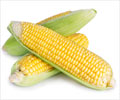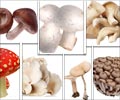Mushrooms growing in dry spruce forests covering Alaska, Canada, Scandinavia and other northern regions, can slow down climate warming in the regions.
A new study has found that mushrooms growing in dry spruce forests covering Alaska, Canada, Scandinavia and other northern regions, can slow down climate warming in the regions.
When soil in these forests is warmed, fungi that feed on dead plant material dry out and produce significantly less climate-warming carbon dioxide than fungi in cooler, wetter soil.This came as a surprise to scientists, who expected warmer soil to emit larger amounts of carbon dioxide (CO2) because extreme cold is believed to slow down the process by which fungi convert soil carbon into CO2.
Knowing how forests cycle carbon is crucial to accurately predicting global climate warming, which in turn guides public policy to curb greenhouse gas emissions.
This is especially important in northern forests, which contain an estimated 30 percent of the Earth's soil carbon, equivalent to the amount of atmospheric carbon.
"We don't get a vicious cycle of warming in dry, boreal forests. Instead, we get the reverse, where warming actually prevents further warming from occurring," said Steven Allison, ecology and evolutionary biology assistant professor and lead author of the study.
"The Earth's natural processes could give us some time to implement responsible policies to counteract warming globally," he added.
Advertisement
Allison and his colleague, Kathleen Treseder, sought to find out what happens to carbon dioxide levels when boreal forest soil not containing permafrost is warmed.
Advertisement
Both plots received equal amounts of water.
In mid-May when growing season began, air and soil temperatures were the same in greenhouses and control plots.
When greenhouses were closed, air temperature rose about 5 degrees Celsius, and soil temperature rose about 1 degree.
The scientists took measurements in the greenhouses and unheated plots and found that by growing season's end in mid-August, soil in warmed greenhouses produced about half as much carbon dioxide as soil in cooler control plots.
A soil analysis found that about half as much active fungi were present in experimental greenhouse samples compared with samples from the controls.
When fungi dry out, they either die or become inactive and stop producing carbon dioxide, the scientists said.
According to Treseder, "It's not so great for the fungi, but might help offset a little bit of the carbon dioxide we are putting directly into the atmosphere by burning fossil fuels."
Source-ANI
SPH














